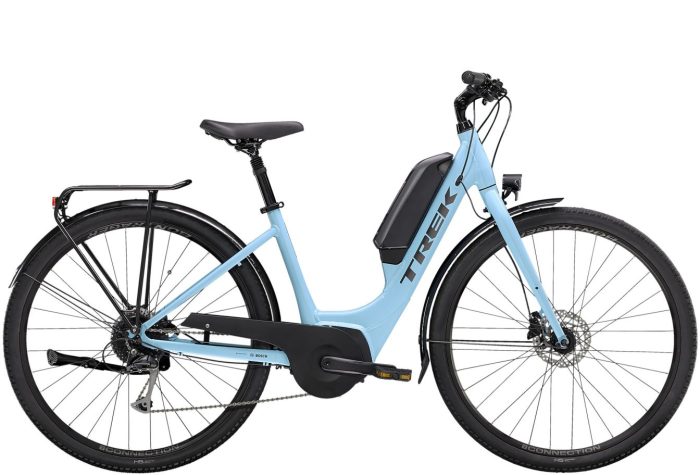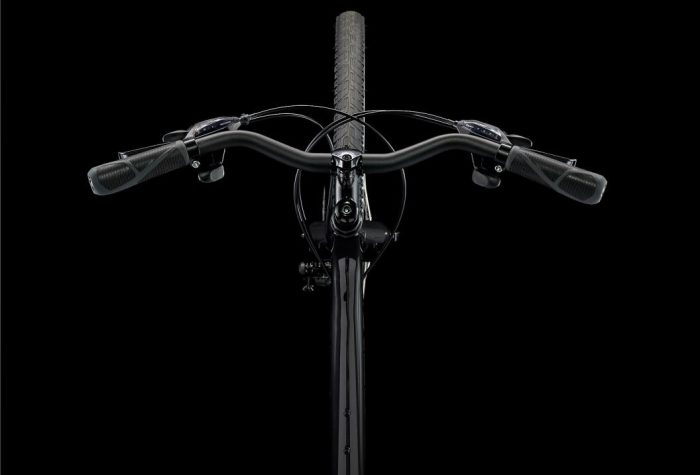Smartphone Vs Bike Computer – Which Should You Use
Cycling enthusiasts used to record their rides using specialized equipment, which by today’s standards was quite primitive and could only measure speed and distance.
These days, you can record what seems like every measure imaginable to gain a staggering amount of knowledge into your riding performance. The days of using a paper map while driving seem to be long gone for the majority of us. With GPS bike computers and the most recent route-building software, navigation is a breeze.
Which device—a Smartphone or a bike computer—is preferable for recording bike rides? I’m not the only one who simply adores bike computers. Given that the majority of us carry Smartphone that can record bike rides with the correct apps, it is reasonable to wonder whether anyone actually needs a bike computer any more. When you already have an expensive, multifunctional smartphone in your pocket, why would you want to spend additional money on a bike computer? This is a great question, and in this piece I’ll compare recording your rides on your Smartphone versus a bike computer. Which device—a Smartphone or a bike computer—is preferable for recording bike rides? I’m not the only one who simply adores bike computers.
WARNING:
I won’t claim that one is superior to the other. I firmly believe that the decision is based on your own needs and, of course, your financial situation. In light of this, I’ll weigh the advantages and disadvantages of both strategies so you can make your own judgment.
Table of Content
In this guide we have covered the following areas for Smartphone vs Bike Computer:

EIGHT THINGS TO CONSIDER:
There are heaps of factors to consider before making comparison between smartphone and bike computers. Such as following:
1. PRICE:
Bicycle computers range in price from $40 for simple speed and distance recorders to over $300 for feature-rich GPS computers that can do anything from record rides to recommend rest periods.
Given that Smartphone are frequently among the most expensive items we own and do many of the same tasks as smart watches or bike computers, purchasing a second gadget may seem like a needless extravagance. On the other hand, purchasing a specific cycling accessory and protecting your Smartphone from danger may seem like a worthwhile investment.
2. SIZE:
Typically, a smartphone will weigh a little bit more and occupy a little more space on your handlebars than a bike computer. On the other side, if you are elderly, a smartphone’s screen might be easier to read than a tiny bike computer.
However, a lot of more expensive bike computers enable you design a screen that only displays the information that matters to you, including speed and power. It’s actually simpler to view those kinds of personalized data displays than a Smartphone app.
3. DURABILITY:
If you ride a bike frequently enough, you’ll eventually find yourself biking through snow and rain. Bicycle computers and specialty cycling watches are made to endure inclement weather.
If you plan to use a Smartphone while riding, you can put it in your pocket, but hiding it won’t do anything to aid with navigation. Of course, a specific bike smartphone mount can be used to attach a Smartphone to the handlebar.
Resilience is another consideration, and bike computers are made to endure potential shocks. Nothing compares to rummaging through stinging nettles to recover your bike computer after a fall.
4. BATTERY LIFE:
If your smartphone’s brightness is set to a high level to combat sun glare, it generally won’t last more than 4-5 hours without a portable charger. If you’re a distance rider, the battery life of a smartphone just won’t cut it, so you should instead choose a GPS bike computer. If you’re going on a long ride far from home, you’ll also need your smartphone battery to be high in case of emergencies.
5. SENSORS:
While some of the essential information is provided by cycling apps, sensors are essential in providing you with data on your speed, cadence, and other variables.
While there aren’t any sensors that can measure power, speed, cadence, or heart rate when using Bluetooth and Smartphone, if you already have ANT+, your smartphone won’t support this either.
Your options are restricted because platforms like Strava disabled third-party support, so you won’t have any of that data to utilize there. You could possibly buy a third-party dongle to put into your smartphone and receive the data that way.
But if you don’t care about ANT+ much and can use Bluetooth, this is a good option for your sensors. You’ll need to locate an app that shows data while you’re riding and lets you export it for analysis afterward.
Since a dedicated bike computer would automatically connect and display the data on many screens that can be easily interpreted, using a smartphone with sensors is possible but not as simple as it is with a dedicated bike computer.
6. NAVIGATION:
A Smartphone with a specific cycling app, like Komoot or Strava, can be used to navigate while biking. The greatest bike computers frequently feature extensive maps preinstalled that resemble topographic maps and include specific routes, trails, waypoints, and facilities.
Some bike computers let you drop a pin and will automatically guide you to your destination, while others need you to create routes via an app and send them to the bike computer.
It’s important to keep in mind that many computers only have a limited number of map territories installed onto them, so if you plan to travel to new areas, you might need to buy additional maps.
7. ACCURACY:
When comparing a trip recorded on a cycling computer using GPS to a ride recorded on a smartphone using GPS and an app, it’s not uncommon for people to notice discrepancies in average speed and even distance. The quality of the GPS data is mostly responsible for the variations.
Computers typically determine average speed within the device itself, but after the file is uploaded, Strava performs its own analysis of the data, taking into account both the overall activity distance and the observed movement time.
Whichever is more accurate, according to Hawkins, “depends on the electronics inside the bike computer and the GPS signal from your smartphone.”
The GPS system, which combines the chip in your device and the satellites above the Earth, may function differently from day to day, according to a statement made by Strava in its help pages.
Cycling computers typically use barometric altimeters to measure atmospheric pressure to determine height; accuracy can be impacted by the weather, among other things.
8. COMPATIBILITY:
Functional Threshold Power (FTP), VO2 max, power-to-weight ratio, and training zones can all be discovered by pairing your bike computer or smart device with a power meter or heart rate sensor.
You can monitor and manage your indoor training using a variety of gadgets that can link to a smart trainer. Most of the time; Bluetooth will be used to link supplementary devices to your smartphone, bike computer.
Even while connecting devices has become simpler over time, it’s important to note that some power meters only use ANT+ and won’t work with certain Smartphone.
However, a lot of bike computers and smart watches use Bluetooth to connect to Smartphone. Companies like Wahoo and Garmin have apps for your smartphone that allow you to update and manage their products. These companies also provide push notifications to your bike computer or watch for incoming calls and texts.
BIKE COMPUTERS:
Bike Computer Pros:
- Bicycle computers excel where other smart gadgets fail because they are weatherproof, crash-resistant, and engineered to fit on handlebars.
- For certain riders, recording GPS data is also crucial, and bike computers have plenty of battery life to accomplish just that. Also easy to use are today’s huge touch screens.
- It’s doubtful that there will be any compatibility concerns if you want to take your training to the next level with a power meter or cadence sensor because bike computers can connect to almost any other smart cycling gadget.
Bike Computer Cons:
- Bike computers don’t really have any drawbacks when it comes to cycling, but there are a few things that can discourage you.
- The price of a bike computer may be deterring if you’re just starting out, shopping on a tight budget, or don’t intend to go on long rides given that your Smartphone can do many of the same functions.
- A wristwatch might be a better use of your money if you run or engage in any other sports because a bike computer is also only made for riding.
SMARTPHONES:
Smartphone Pros:
- Since the vast majority of people already own a Smartphone, using one instead of a bike computer is far more practical.
- It is much simpler than looking around for a bike computer to just download a Smartphone app that tracks a lot of the same bike ride data as many bike computers.
- It’s now simpler than ever to learn more about your performance because so many heart rate monitors and power meters can now link to recording devices via Bluetooth.
Smartphone Cons:
- The impact GPS usage has on battery life is the largest disadvantage of using a Smartphone to record your journeys. Your battery will be completely depleted after just a couple of hours of installing and using a GPS programmed, preventing you from taking extended trips.
- A Smartphone is an expensive item, and they aren’t made to endure extreme weather conditions or drops. Therefore, mounting it on your handlebar exposes it to various weather conditions. Furthermore, there is a considerable probability it will fall off and crash if it is not adequately fastened.
- While many of the important parameters seen on GPS bike computers, such as average speed, distance, etc., can typically be matched by smartphones. They don’t go into detail on some of the more sophisticated cycling data that might be useful if you take your biking seriously.
- Some gadgets can link to cell phones, but not all of them. So if you wish to purchase any additional gadgets, like a speed sensor, relying solely on a Smartphone can cause some problems.
Victory Between Smartphone Vs Bike Computer
Now that we’ve examined cycle computers and Smartphone, it’s time to say for sure which the right approach is.
You don’t need to worry too much about spending a lot of money on a top-of-the-line bike computer only to acquire the data you need because the majority of bike computers come with all the functions you’ll need, from speed and time to turn by turn navigation.
With a dedicated bike computer, you can go on all kinds of road excursions without having to worry about running out of battery life. These computers are made to handle the tough terrain you’ll probably experience on your mountain bike.
Smartphones are undoubtedly more practical and do provide the same information as bike computers, but if you’re serious about cycling, they’re simply not the best option.
They require far more frequent battery changes and are much more prone to damage than a bike computer. Therefore, a cycle computer is an essential piece of equipment if you routinely workout or participate in cycling events, trails, etc.
Alternatively, if you only bicycle once a week for 30 minutes or to work, you probably don’t need a bike computer and can check your data on your smartphone instead.
In general, a cycling computer is the best option and will be more useful to you than a Smartphone. Thus, the bike computer is unquestionably the winner in the Smartphone vs. bike computer comparison.
Smartphone vs Bike Computer FAQs:
Can I use smartphone as bike computer?
An Android app called Jepster turns your Smartphone into a bike computer. It employs GPS to provide you with up-to-the-minute performance data on your journey. You can track your progress while enjoying your trip thanks to a variety of features in this app.
Is bike computer necessary?
No, not always. Other than a bike, you really don’t need much to ride. However, bike computers are practical tools that provide you access to a wealth of information and navigation features that are either absent or insufficiently present in your other devices.
Are bicycle computers accurate?
Although the distance reading is directly derived from the rotation of a bicycle wheel, it is never precisely reproducible.
Do I need a bike computer for power meter?
To display and store your power and ride data, all power meters require the usage of handlebar-mounted bike computers.
What should I look for in a bike computer?
Common bike computer features
Current speed.
Maximum speed.
Average speed.
Elapsed time.
Trip distance.
Wireless compatible.
Can Strava replace bike computer?
The news from Strava on Friday afternoon that if you manage to destroy your bike computer or phone while riding your bicycle, Strava will now pay to get that gadget fixed or replaced is one of the things I didn’t see coming. Actually, it’s a company they’ve worked with, not Strava.
Can you use a bike computer for hiking?
It is not recommended to use a Garmin Edge GPS bike computer for hiking. Even with auto-pause turned off, it struggles to record low-speed movement and automatically filters out GPS drift. The distance displayed and recorded won’t be exact even when the map tracking is accurate.
Contact Us
If you have any suggestions or advise, please feel free to reach us via our Contact Us here.



